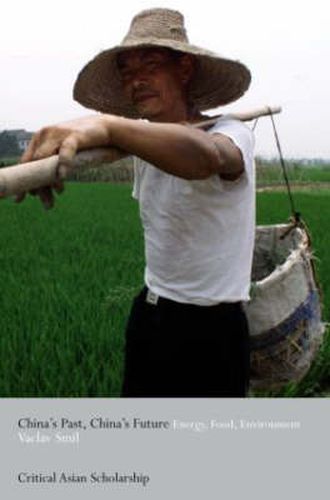Readings Newsletter
Become a Readings Member to make your shopping experience even easier.
Sign in or sign up for free!
You’re not far away from qualifying for FREE standard shipping within Australia
You’ve qualified for FREE standard shipping within Australia
The cart is loading…






China has a population of 1.3 billion people which puts strain on her natural resources. This volume, by one of the leading scholars on the earth’s biosphere, is the result of a lifetime of study on China, and provides the fullest account yet of the environmental challenges that China faces. The author examines China’s energy resources, their uses, impacts and prospects, from the 1970s oil-crisis to the present day, before analysing the key question of how China can best produce enough food to feed its enormous population. In answering this question the entire food chain - the environmental setting, post harvest losses, food processing, access to food and actual nutritional requirements - is examined, as well as the most effective methods of agricultural management. The final chapters focus upon the dramatic cost to the country’s environment caused by China’s rapid industrialization. Widespread environmental problems discussed include: Water and air pollution Water shortage Soil erosion Deforestation Desertification Loss of biodiversity In conclusion, Smil argues that the decline of the Chinese ecosystem and environmental pollution has cost China about ten per cent of her annual GDP. This book provides the best available synthesis on the environmental consequences of China’s economic reform program and will prove essential reading to scholars with an interest in China and the environment.
$9.00 standard shipping within Australia
FREE standard shipping within Australia for orders over $100.00
Express & International shipping calculated at checkout
China has a population of 1.3 billion people which puts strain on her natural resources. This volume, by one of the leading scholars on the earth’s biosphere, is the result of a lifetime of study on China, and provides the fullest account yet of the environmental challenges that China faces. The author examines China’s energy resources, their uses, impacts and prospects, from the 1970s oil-crisis to the present day, before analysing the key question of how China can best produce enough food to feed its enormous population. In answering this question the entire food chain - the environmental setting, post harvest losses, food processing, access to food and actual nutritional requirements - is examined, as well as the most effective methods of agricultural management. The final chapters focus upon the dramatic cost to the country’s environment caused by China’s rapid industrialization. Widespread environmental problems discussed include: Water and air pollution Water shortage Soil erosion Deforestation Desertification Loss of biodiversity In conclusion, Smil argues that the decline of the Chinese ecosystem and environmental pollution has cost China about ten per cent of her annual GDP. This book provides the best available synthesis on the environmental consequences of China’s economic reform program and will prove essential reading to scholars with an interest in China and the environment.